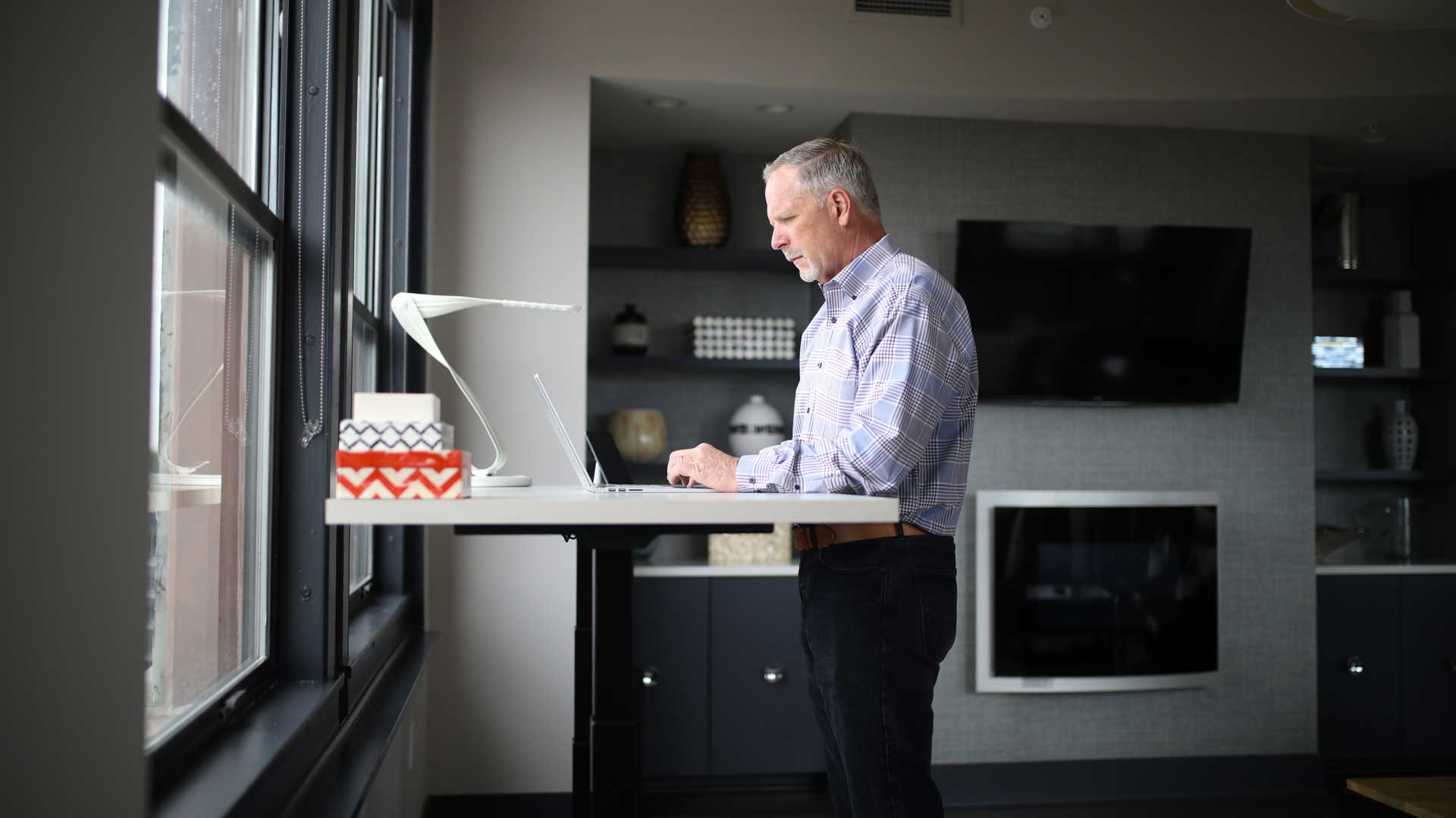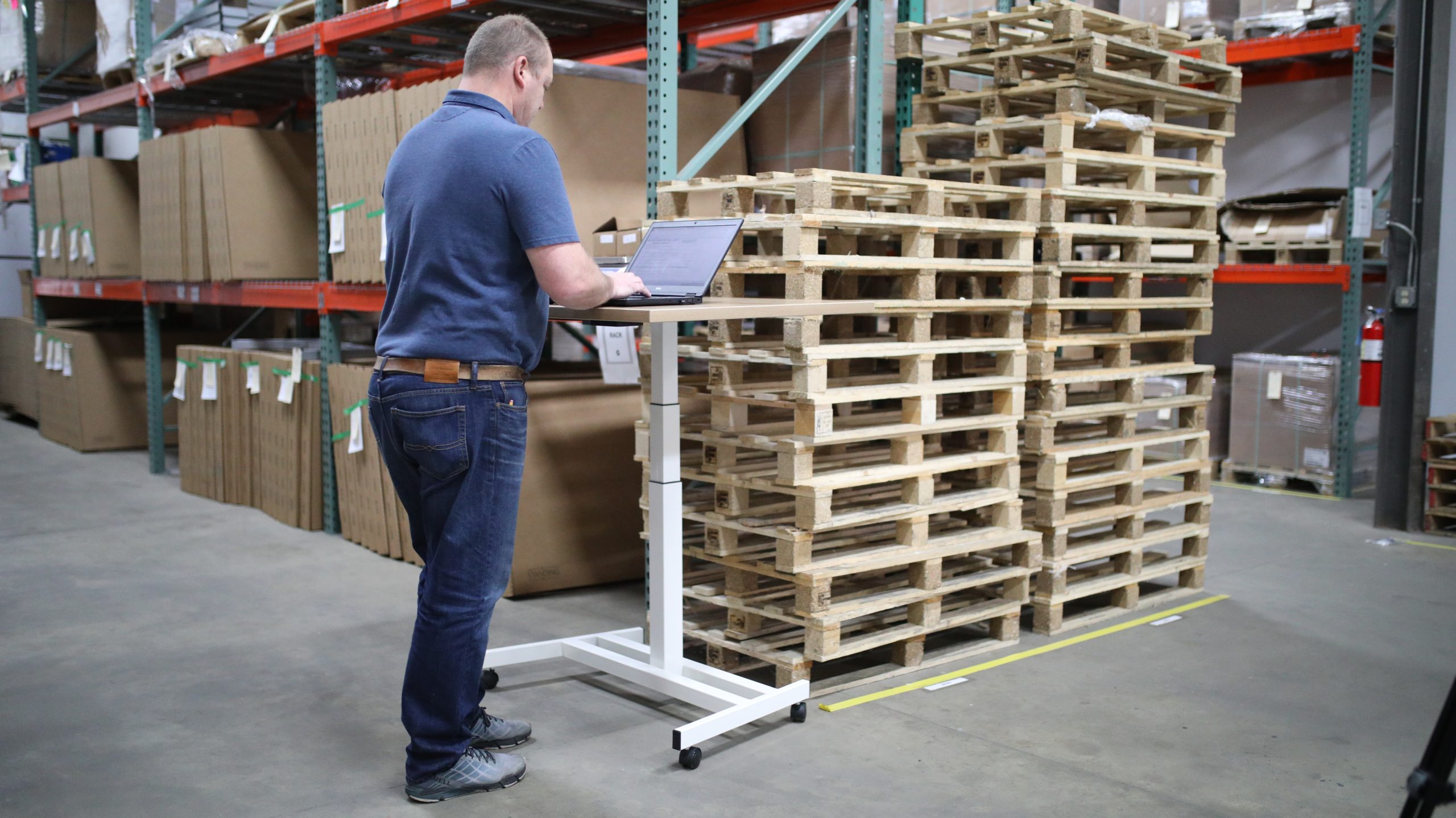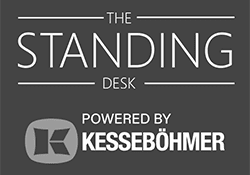Is It Healthier to Stand While Working?
Whether you’re in the office or working from home, day-to-day work may have you wondering whether it’s healthier to stand while working. After all, the risks of sedentary behavior are well defined – increased risk for obesity, diabetes, and heart disease among them. Research has shown that sitting for more than an hour brings about biochemical changes in fat and glucose metabolism, leading to deposits of fat in adipose tissue. Overall, would a standing desk be a healthier option?
The problem with standing
Standing does require more muscle activity than sitting and theoretically burns 20% more calories. However, standing while working comes with its own set of issues. For assembly line workers and others who are on their feet all day, standing for long periods of time increases strain on the circulatory system. That in turn can cause varicose veins and problems with legs and feet. Others complain of muscle strains, joint issues, and spinal compression.
How our bodies evolved
It turns out our bodies were not designed to stand all day either. In the same way that sitting all day can cause back issues by putting pressure on the back, standing all day can cause spinal issues as well, especially if you don’t use an ergonomic position at an ergonomic standing desk.
Daniel Lieberman, author of the 2021 book Exercised: Why Something We Never Evolved To Do Is Healthy And Rewarding, suggests that paleoanthropology gives us clues about how our bodies were designed to sit and stand. According to Lieberman, humans actually have evolved to sit for much of the time. Scientists studying modern hunter/gatherer cultures have found that they sit for approximately 10 hours a day. That’s actually about the same for desk-bound workers. The problem occurs if sitting is all you do.
Hunter/gatherer cultures do sit, but they also get up frequently to take care of a fire or a child. Lieberman suggests that interrupted sitting is really the best way to sit. Getting up every once in a while, you may not burn a lot of energy, but you do turn on your muscles, which are the largest organ in your body. Activating your muscles reduces inflammation, as well as using up fats and sugars in your bloodstream.
Engaging your muscles on a regular basis helps keep muscles going. Standing occasionally helps improve circulation and reduce aches and pains related to sitting in one position for an extended period.
How to reduce the risks of sitting
With this in mind, there are a number of things an office worker can do to reduce the risks of sitting. Take frequent breaks and step away from your desk. Try walking meetings. Ride a bike to work. Try a therapy ball chair or some alternative position that requires active muscle engagement. And of course try a height-adjustable workstation, which allows you to sit and stand naturally at intervals throughout the day.
When you do increase your standing time at intervals, an important caveat is to choose an ergonomic position. Wearing high heels would negate the positive effects of a standing desk.
The sit/stand sweet spot
For the modern office worker, a height adjustable workstation allows the best of both worlds – the ability to sit and stand naturally at intervals, and continue to work as well. Your hunter/gatherer body will thank you.





